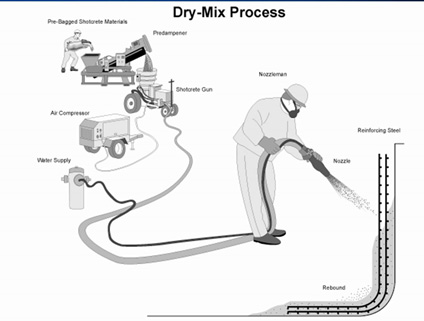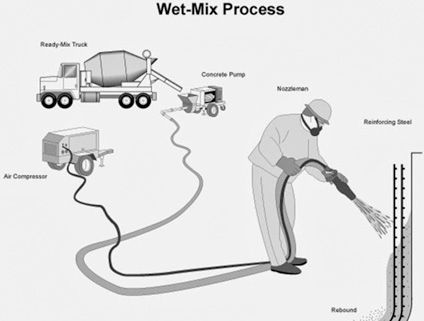Dry-Mix or Wet-Mix ?

Although both wet and dry shotcrete have specific benefits, advancements in both material and equipment technology make both processes almost interchangeable.
In most applications, the preferred method is determined by:
- Economics
- Availability of material and equipment
- Site access
- The expertise and preference of the contractor
Today, rebound levels, dust levels, and properties such as bond strength, compressive strength, and durability can be similar whether the wet or dry method is used.
The properties of both wet- and dry-process shotcrete can be further enhanced through the addition of many different additives or admixtures such as:
- Silica Fume — Provides reduced permeability, increased compressive and flexural strength, increased resistance to alkali and chemical attack, improved resistance to water washout, reduced rebound levels, and allows for thicker single pass applications;
- Air-Entraining Admixtures — Improve pumpability and adhesion in wet-process shotcrete and freeze-thaw durability in both wet and dry processes;
- Fibers — Control cracking, increase toughness values, improve impact resistance and energy absorption; and
- Accelerators — Improve placement characteristics in adverse conditions, allow for thicker single pass applications, increase production capabilities, and reduce the occurrence of fallouts on structures subjected to vibration.


